Northrop B-2 Spirit
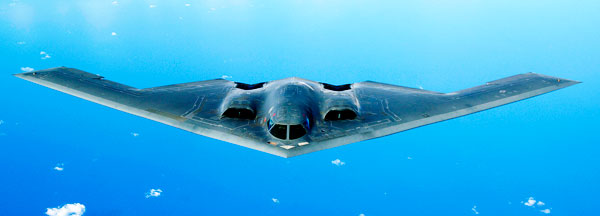
The B-2 Spirit looks sinister because it has the dark mission of pressing into enemy territory in an atomic war. Northrop designed this charcoal-grey flying wing as teh world's only stealth bomber, an invisible ghost to enemy radar operators. Long kept under a cloak of secrecy, the B-2 is out in the open today and is fully operational, with both nuclear and conventional bombing dutites.
Northrop B-2 "Stealth Bomber"
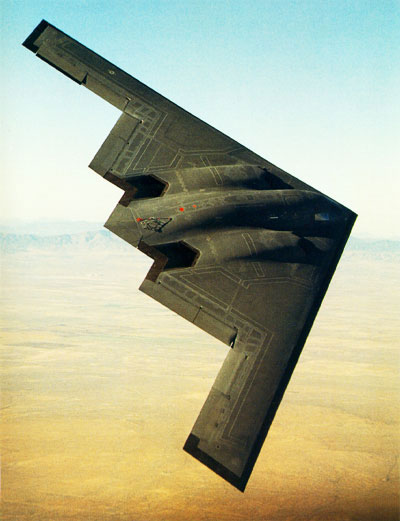 The B-2 was designed to meet the
same kind of low-observable
'stealthy' requirement as the smaller,
angular 'faceted' F-117. The aircraft,
however, looks very different with its
smooth, rather bulbous and curvaceous whale-lake fuselage.
The B-2 was designed to meet the
same kind of low-observable
'stealthy' requirement as the smaller,
angular 'faceted' F-117. The aircraft,
however, looks very different with its
smooth, rather bulbous and curvaceous whale-lake fuselage.
The reason for the apparently very different shapes of the two aircraft may lie in the rapid advance in the processing power of modern computers. When the F-117 was designed, its creators could only calculate radar cross section by using the RCS of individual flat panels. Some suggest, however, that the B-2's designers were able to accurately calculate the RCS of three-dimensional curved shapes. Others suggest that Northrop arrived at their 'stealthy' shape by trial and error. The truth probably lies somewhere in the middle that Northrop began looking at 'curved' stealth shapes during the 'Have Blue' program which resulted in the F-117. They then refined them during the 'Assault Breaker' program for a stealthy battlefield surveillance aircraft (which resulted in the 'Tacit Blue' demonstrator), before further refining its approach for the Advanced Technology Bomber (ATB).
The Northrop B-2 was never slur- rounded by the same degree of secrecy as the F-117, because it was never intended for the same kind of 'deniable' semi-covert role. Rather, the B-2 was to be part of the US strategic deterrent, and as such was always intended to be highly visible and deliberately, intimidatingly threatening.
The aircraft was designed to meet arguably the most challenging military requirement in history, since its primary purpose was to penetrate Soviet airspace unseen. It was then intended to destroy mobile ICBMs and other high priority targets. The B-2 was to execute such strikes before the Soviet Union even realized that it was under attack, and perhaps before US ICBMs and other assets could degrade the enemy's air defenses!
This requirement for a 'stealthy' bomber was authorized in 1979. A design study, capped at $2 million was commissioned (any, project costing more than this would have had to have been reported to Congress). The B-2 was designed to be much more than a one-mission bomber, and was designed to be able to return to any airfield capable of handling a Boeing 727 to be re-armed and re-fueled for a second strike.
Northrop's proposed Senior Ice reportedly beat Lockheed's competing Senior Peg design in almost every area. After Reagan replaced Carter as US president in November 1980, the decision was taken to build an interim force of 100 B-1s. This was to be followed by 132 Northrop B-2 Advanced Technology Bombers.
The basic flying wing configuration
was selected at an early stage, initially
with vestigial inward-canted fins
above the center section. This migrated outwards towards the wingtips before being dropped altogether. The
W-shaped trailing edge was adopted in
order to give sufficient extra strength
and rigidity for low level penetration,
should it ever become necessary. the
aircraft uses an advanced, 'Low
Probability of Intercept' radar to find
and attack its targets.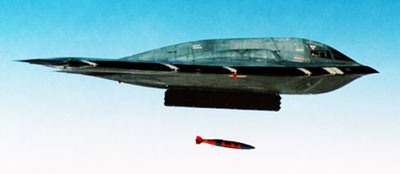
The first B-2 prototype made its maiden flight on July 17, 1989, about two years late. This was followed by five more development aircraft (all later converted to the full Block 30 operational standard) and 15 production aircraft. B-2 production plans had been slashed from 732 to only 75 under the Pentagon's 1990 Major Aircraft Review. This 43 per cent cut in aircraft numbers saved 19 per cent in total program costs. Worse was to follow, with President George Bush seeking funds for only five extra B-2s (bringing the total to 21) in 1992.
A 1994 offer by Northrop to build 20 more B-2s at a guaranteed unit price of $566 million was turned down by President Bill Clinton's administration, with USAF support. The USAF have been happy with the B-2, but regard the present single wing force as adequate, while they have pressing priorities elsewhere, not least with the F-22 fighter.
The B-2 was declared operational in the conventional role in January 1997. It has since played a significant part in every major IJS operation, having seen active service in the Kosovo campaign and in operations over Afghanistan. The aircraft has an unparalleled ability to hit difficult targets with great force and precision from its IJS base. This freed the United States from reliance on basing in friendly allied countries, or even from gaining over flight permission from reluctant allies.
The Northrop B-2 is claimed to represent an extremely cost-effective air power solution. The aircraft can operate with minimal tanker support:, and without the need for SEAD or fighter escort:, and it can penetrate enemy defenses and drop cheaper weapons with great accuracy. The aircraft is capable of flying extremely long-duration missions. A toilet :and rest bunk are routinely carried. Despite the existence of the B-2 never being a secret,, mystery continues to surround the aircraft. Some even believe that the B-2 incorporates a unique electrical charging ('electro- gravitic') system, whose effect is said to be to reduce aircraft weight by countering gravity!
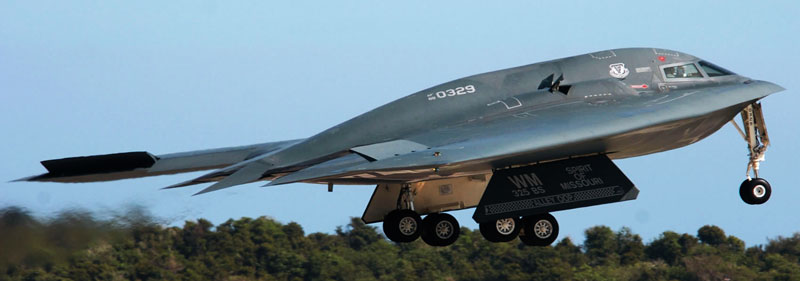
B-2 Spirit
The Northrop Grumman B-2 Spirit (also known as the Stealth Bomber) is an American heavy bomber with "low observable" stealth technology designed to penetrate dense anti-aircraft defenses and deploy both conventional and nuclear weapons. Because of its considerable capital and operations costs, the project was controversial in Congress and among Pentagon brass. During the late 1980s and early 1990s, Congress slashed initial plans to purchase 132 bombers to just 21.
The cost of each aircraft averaged US$737 million in 1997 dollars. Total procurement costs averaged US$929 million per aircraft, which includes spare parts, equipment, retrofitting, and software support. The total program cost, which includes development, engineering and testing, averaged US$2.1 billion per aircraft (in 1997 dollars).
Twenty B-2s are operated by the United States Air Force. Though originally designed in the 1980s for Cold War operations scenarios, B-2s have been used in combat to drop bombs on Serbia during the Kosovo - Serbia Conflict in the late 1990s, and see continued use during the ongoing wars in Iraq and Afghanistan. One aircraft was lost when it crashed on takeoff in 2008.
The bomber has a crew of two and can drop up to 80 500 lb-class JDAM GPS-guided bombs, or 16 2,400 lb B83 nuclear bombs in a single pass through extremely dense anti-aircraft defenses. The B-2 is the only aircraft that can carry large air to surface standoff weapons in a stealth configuration. The program has been the subject of espionage and counter-espionage activity and the B-2 has been prominent public spectacles at air shows since the 1990s.
Operational History
The first operational aircraft, christened Spirit of Missouri, was delivered to Whiteman Air Force Base, Missouri, where the fleet is based, on 17 December 1993. The B-2 reached initial operational capability (IOC) on 1 January 1997. Depot maintenance for the B-2 is accomplished by U.S. Air Force contractor support and managed at Oklahoma City Air Logistics Center at Tinker Air Force Base. Originally designed to deliver nuclear weapons, modern usage has shifted towards a flexible role with conventional and nuclear capability.
Into Combat
The B-2 has seen service in three campaigns. Its combat debut was during the Kosovo War in 1999. It was responsible for destroying 33 percent of selected Serbian bombing targets in the first eight weeks of U.S. involvement in the War. During this war, B-2s flew non-stop to Kosovo from their home base in Missouri and back. The B-2 was the first aircraft to deploy GPS satellite guided JDAM "smart bombs" in combat use in Kosovo.
The B-2 has been used to drop bombs on Afghanistan in support of the ongoing War in Afghanistan. With the support of aerial refueling, the B-2 flew one of its longest missions to date from Whiteman Air Force Base, Missouri to Afghanistan and back.
During the ongoing War in Iraq, B-2s have operated from Diego Garcia and an undisclosed "forward operating location". Other sorties in Iraq have launched from Whiteman AFB. This resulted in missions lasting over 30 hours and one mission of over 50 hours. The designated "forward operating locations" have been previously designated as Guam and RAF Fairford, where new climate controlled hangars have been constructed. B-2s have conducted 27 sorties from Whiteman AFB and 22 sorties from a forward operating location, releasing more than 1.5 million pounds of munitions, including 583 JDAM "smart bombs" in 2003.
The B-2's combat use preceded a U.S. Air Force declaration of "full operational capability" in December 2003. The Pentagon's Operational Test and Evaluation 2003 Annual Report noted that the B-2's serviceability for Fiscal Year 2003 was still inadequate, mainly due to the maintainability of the B-2's low observable coatings. The evaluation also noted that the Defensive Avionics suite also had shortcomings with pop-up threats.
All B-2s, nuclear-capable B-52s, and nuclear intercontinental ballistic missiles have shifted to the new nuclear-focused Air Force Global Strike Command scheduled to be set up by September 2009.
Specifications for the B-2 Spirit Bomber
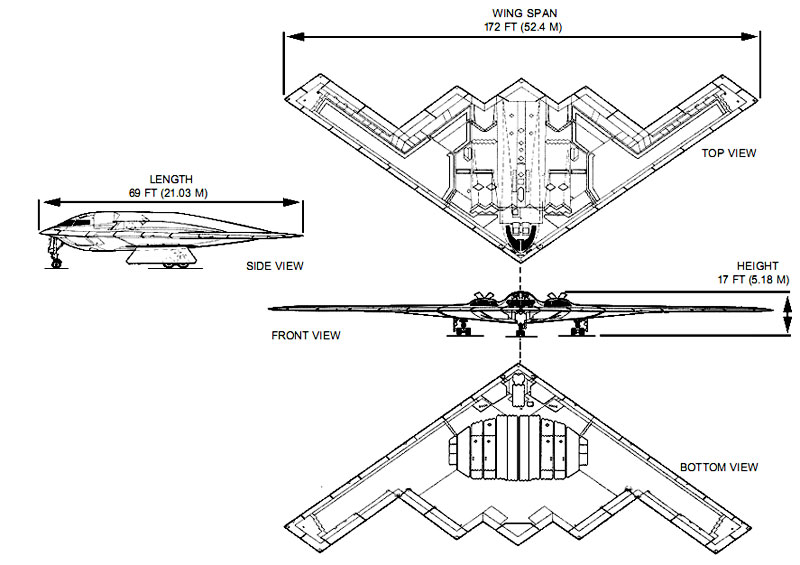 |
Crew: 2
|
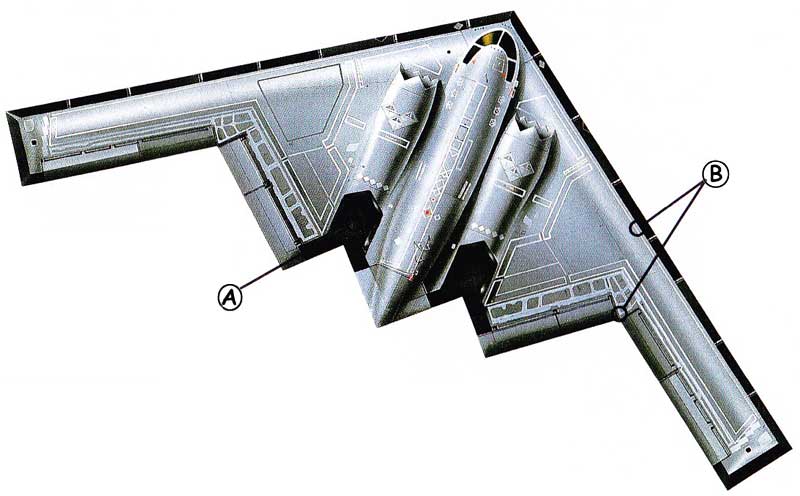 |
|
| A: The engines exhaust through 'V'-shaped outlets set back and above the trailing edges to hide these heat sources from the ground. | B: The 33deg sweep of the leading edge and the 'W' configuration of the trailing edge ar designed to trap and deflect radar energy away from a hostile transmitter. |
 |
||
| A: The Hughes AN/APQ-181 attack radar has phased array transmitters buried in the fuselage, so there is no need for a dish aerial and its bulbous radome. | B: The B-2 has an advanced two man cockpit with provision for a third crew member/observer. High technology has done away with the flight engineer and the bombardier of earlier bombers. | C: The B-2 is powered by four General Electric F118 non-afterburning turbofans. they are buried deep within the aircraft, keeping the highly radar-reflective fan blades away from enemy radar transmissions. |
| D: Extensive use is made of graphite/epoxy materials in the aircraft's structure. These are not good reflectors of radar energy, and contribute to the bombers' stealthiness. | E: The B-2's undercarriage has been adapted from a commercial design, used on the Boeing 757 and 767 airliners. |
F: Vapor trails are the enemy of any aircraft claiming to be stealthy. Chloro-fluorosulphonic acid is injected into the exhaust gases of the B-2 to inhibit the formation of contrails at high altitude. |
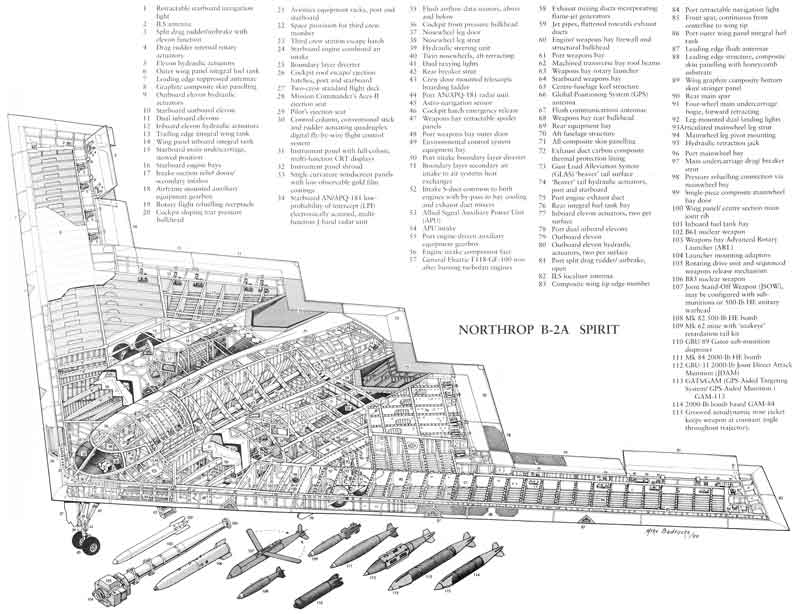 |
This fabulous B -2 cutaway comes in full size PDF for FREE included in your MyModels folder! |
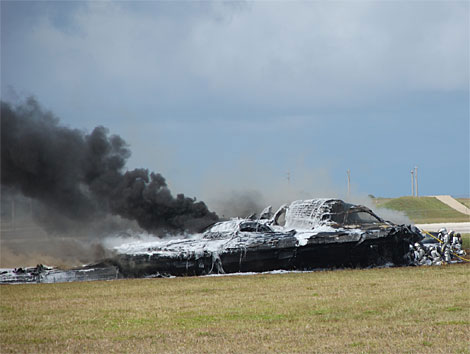
Model is still under development. 11/09/2009

